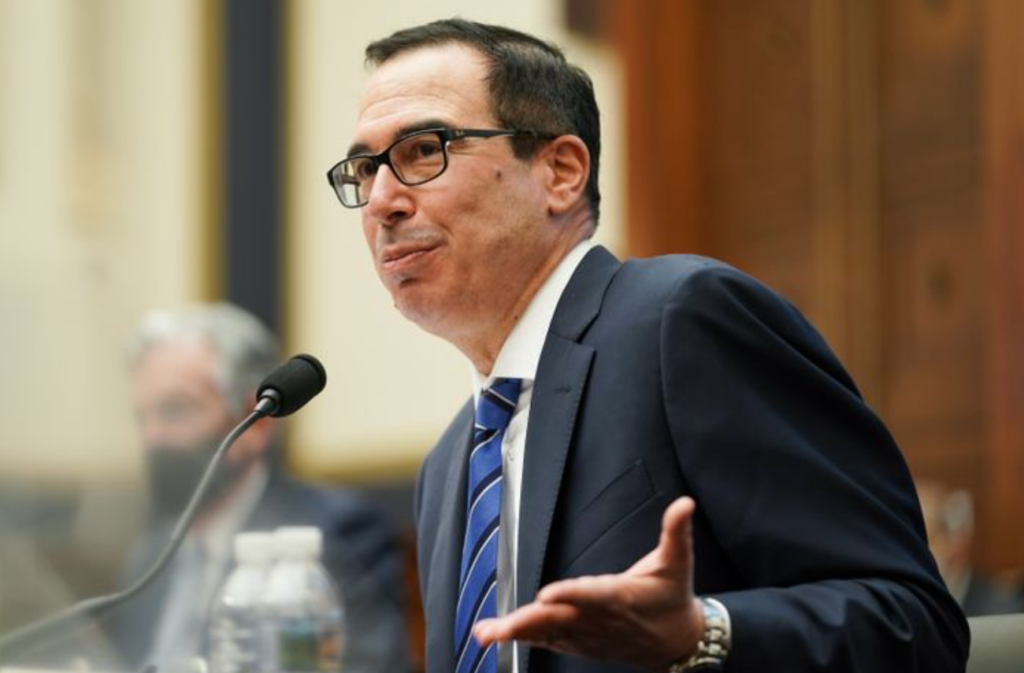
Richard Nixon once planned to give every poor household in the United States an unconditional basic income. In 1969, Tricky Dick prepared an anti-poverty plan that would have provided a family of four — in which no adult earned any income through employment — $11,000 a year in today’s money, courtesy of Uncle Sam. The proposal enjoyed support from then-Representative George H.W. Bush and Nixon adviser Donald Rumsfeld.
Today, when even progressive Democrats often prefer earned income tax credits to guaranteed incomes for the jobless, the idea of a Republican race-baiter pushing for unconditional welfare payments is disorienting. But the past is a different country. The high-growth, high-profit postwar economic environment lent an air of abundance to that era’s policy thought. This was a time when intellectuals fretted over the psychological difficulties Americans would encounter once full-time work ceased to be necessary for their own prosperity. Meanwhile, the labor and civil-rights movements were still going concerns that could use their collective weight to tip economic common sense in an egalitarian direction.
But Nixon’s (ultimately abandoned) anti-poverty plan wasn’t rooted solely in humanitarian or interest-group concerns. It also reflected the Keynesian economic consensus of the era: that increasing consumer demand by putting money into the hands of people who would spend it (e.g., workers) creates jobs and fuels growth. Nixon endorsed this theoretical perspective in both word and deed (to spur growth ahead of his reelection campaign, he implemented a large fiscal and monetary stimulus).
Conservatives never much liked demand-side economics. Beyond its concrete material implications (if consumer spending fuels growth, you need to make sure ordinary consumers get a significant share of national income, whether through high wages or fiscal transfers), the theory contradicted the morality tale that reactionary capitalists had long told themselves and the public to reconcile predation with prestige: The agent of prosperity was not the spendthrift consumer, hedonistically pursuing short-term gratification by gobbling up precious resources and thereby earning his place in the purgatory of wage labor; it was the saver, whose self-denial supplied the capital stock that society required to increase its productivity, thereby earning him a place at the summit of the social order (in this era, all stylized economic agents were men).
Fortunately for the ownership class’s self-deluded sociopaths, the stagflation crisis of the 1970s, combined with the conservative movement’s multifaceted organizing, enabled the right to effect a sea change in technocratic common sense: Keynesianism was now a recipe for inflation and long-term economic decline; true prosperity came from increasing the supply side of the economy through inducements to investment — in other words, through putting more money into the hands of those wealthy enough to park it in financial markets instead of in cash registers.
Republicans have therefore spent the past four decades disdaining the very concept of fiscal stimulus and insisting that the true “job creator” is not the quotidian consumer but the heroic entrepreneur (and/or private-equity executive). Of course, in practice, “supply-side economics” looked a lot like “regressive demand-side stimulus.” The Reagan recovery was born of giant tax cuts and deficit-financed military spending, not a surge in productivity growth induced by high business investment. Still, Republicans would never admit that their economic model was just the New Deal Democrats’ old one, except with more labor exploitation and slower growth.
But under Trump, that’s starting to change.
Earlier this week, the White House undermined bipartisan stimulus negotiations by introducing its own framework, which would replace the Senate outline’s $300-a-week federal benefit for the unemployed with a onetime $600 check to all nonaffluent Americans.
Giving $600 once to a group that is predominately still employed — instead of $1,200 a month to the jobless — is deeply regressive. Yet when Treasury Secretary Steve Mnuchin defended his proposal on Wednesday, the justification was a straightforward endorsement of demand-side economics.
“We obviously want to get people back to work,” Mnuchin told Politico. “By sending out checks, we’re putting money into the economy for people. This will have the impact of creating demand, which will have the impact of creating jobs. We want to get people their jobs back.”
For as long as I’ve been alive, Republicans have been telling America that the way to create jobs is to cut taxes on investors or provide subsidies to corporations or accept higher levels of air pollution. Now, the GOP Treasury secretary has declared that there is an alternative to those unsavory options: We could just mail everyone some free money.
You can dismiss this as a betrayal of Mnuchin’s crypto-liberalism (congressional conservatives surely will), or you can minimize its significance by appealing to the extraordinary economic circumstances of the present moment. Moderate Republicans have long tacitly affirmed that some demand management is necessary in times of acute economic crisis.
But a few GOP wonks are now going further. Republican economist Karl Smith has celebrated Trump’s economic management on the grounds that the president’s willingness to ignore the fear of inflation — and to engage in stimulative deficit spending in a non-recessionary environment — increased wages and job growth far more than President Obama’s more austere approach would have done. Critically, Smith suggests that the demand-side stimulus actually helped grow the supply side of the economy by generating job opportunities attractive enough to lure disaffected Americans back into the workforce, thereby increasing the supply of labor in the U.S.
To be sure, Smith also credits Trump’s tax cuts for the exceptional labor market he presided over in 2019. But as Oren Cass, the policy director of Mitt Romney’s 2012 campaign, acknowledged this week, those tax cuts did not actually do what supply-siders promised. To the contrary, the secret sauce of Trumponomics was juicing demand through fiscal stimulus:
The failure to supply a supply-side boom is most obvious in the investment data, which show no discernible uptick. Lower tax rates were intended to induce higher investment levels. But as Aparna Mathur, a senior economist at the White House Council of Economic Advisers (CEA), observed in September 2019, “it would be fair to conclude that there has been no discernible break in trend since the TCJA” …
How could the economy generate such strong labor-market outcomes despite low growth, weak investment, stagnant productivity, and declining exports? The answer lies in fiscal and monetary policy, which both operated as if the nation were mired in recession. Attempting to stimulate an economy at the top of a record-long business cycle yields interesting results.
In fiscal policy, the federal government’s budget deficits in 2018–19 were unprecedented. The 2019 deficit, which reached 4.6 percent of GDP ($1 trillion), was the largest ever run outside the context of a war or recession. By comparison, the deficit in 2007 at the peak of the prior business cycle was only 1.1 percent. Both during 1999–2000 and in 1969, the last two times the unemployment rate dipped below 4 percent, the budget was in surplus. Ironically, the TCJA’s main effect has likely been as a deficit-expanding fiscal stimulus, though its supply-side evangelists would deny such an effect even exists.
Cass emphasized that he does not regard this growth model as sustainable; only productivity increases can reliably increase aggregate prosperity. But he nevertheless allowed that “tolerance for policies that benefit workers while risking inflation should increase” and advocated for a new conservative economic-policy paradigm that involves increasing labor’s share of national income.
Smith and Cass probably aren’t going to dictate policy terms to Mitch McConnell anytime soon, so don’t expect the next Republican president to guarantee you a minimum income of $11,000 a year. But the revival of demand-driven growth, which only recently secured hegemony among Democratic intellectuals, is starting to gain purchase with nerds on the other side of the aisle. One shouldn’t exaggerate the significance of this development. But one shouldn’t ignore it, either — especially when trying to persuade moderate Democrats to stop worrying and learn to love spending their way to full employment.






















